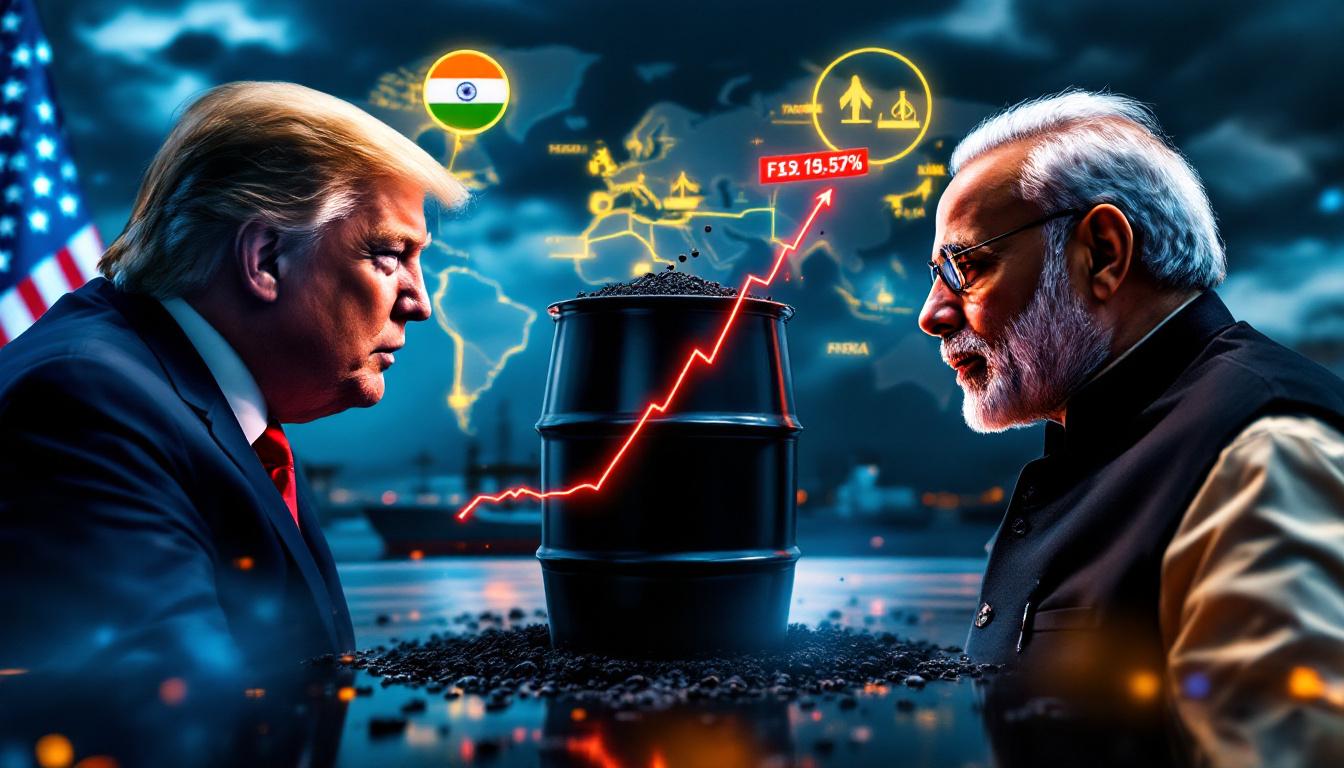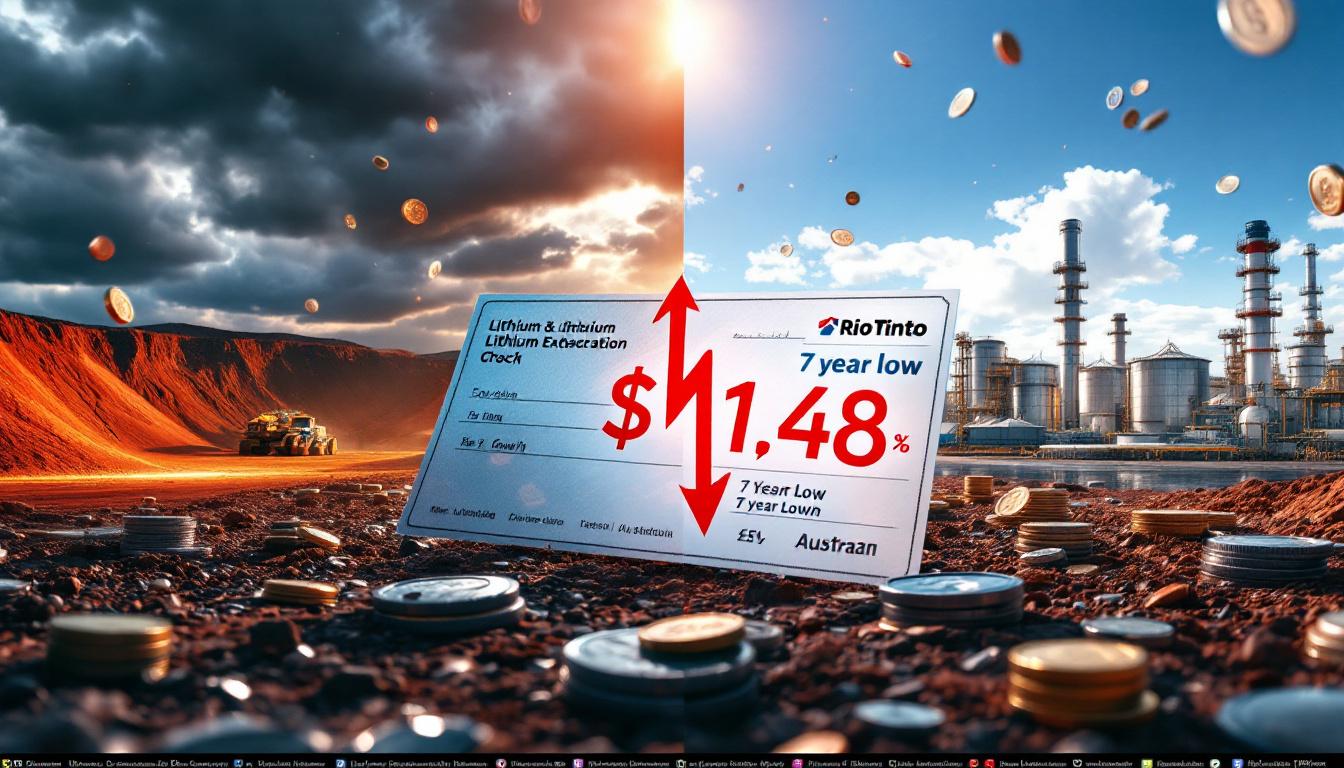What Is Happening in the Shanghai Zinc Futures Market?
The Shanghai zinc futures market has recently experienced significant price fluctuations, creating both challenges and opportunities for market participants. According to the latest data from Shanghai Metal Market (SMM), zinc futures prices have shown a notable decline, triggering increased activity across various market segments. These movements align with broader zinc production trends that are reshaping the global market.
Current Market Conditions and Price Movements
Recent trading sessions have established clear price ranges across different zinc grades. Premium 0# zinc is currently trading between 22,300-22,520 yuan/mt, while high-quality Shuangyan zinc commands slightly higher prices at 22,400-22,620 yuan/mt. The lower grade 1# zinc trades at 22,230-22,450 yuan/mt, reflecting the established quality premium structure in the market.
In the morning trading session, spot market premiums ranged between 10-30 yuan/mt against the SMM average price benchmark. This relatively narrow premium range expanded during the second trading session, where more distinct premium differentials emerged across zinc brands:
- Ordinary domestic zinc: +100 yuan/mt against the 2507 contract
- Honglu-v zinc: +80 yuan/mt against the 2507 contract
- Spanish zinc: trading at parity with the 2507 contract
- Huize zinc: +130 yuan/mt against the 2507 contract
- Shuangyan (high-end): commanding a substantial premium of +180-200 yuan/mt against the 2507 contract
These premium variations highlight the market's quality differentiation mechanisms and brand preferences among buyers, with domestic high-grade products like Shuangyan maintaining significant premiums despite overall market pressure.
Trading Volume Analysis
The recent price decline has had a notable impact on market dynamics, with transaction volumes showing measurable improvement. This pattern demonstrates the price-sensitive nature of zinc market participants, particularly downstream buyers who strategically increased purchasing activity to capitalize on more favorable price points.
Traders also displayed heightened activity during the morning session, recognizing buying opportunities created by the futures market decline. This opportunistic purchasing behavior contributed to rising premiums for domestic spot cargo, creating a partial counterbalance to the downward pressure on futures prices.
The improved transaction volumes reflect a common market psychology wherein price-sensitive consumers who had previously delayed purchases due to high prices re-enter the market when they perceive value opportunities. This behavior illustrates the delicate balance between price resistance and demand elasticity in industrial metals markets, a pattern also observed in the broader China metals market.
How Do Zinc Futures Impact the Physical Market?
The relationship between futures and physical (spot) markets represents one of the most important dynamics in the Shanghai zinc trading ecosystem. The recent market movements provide a clear illustration of how these two segments interact and influence each other.
Spot Market and Futures Market Relationship
The recent decline in futures prices triggered an immediate response in the physical market, with spot transaction volumes improving as downstream buyers seized the opportunity to secure material at lower price points. This reactive buying demonstrates the price discovery function that futures markets serve for physical market participants.
A notable feature of the recent trading sessions was the absence of offers explicitly tied to futures market prices during the morning session. Instead, premiums were quoted against the SMM average price, which serves as an alternative benchmark. This pattern shifted in the second trading session, where premiums were predominantly quoted against the 2507 futures contract.
The divergence in premium structures across different zinc grades and brands reveals the complex interplay between futures pricing and physical market realities. While Spanish zinc traded at parity with the 2507 contract, domestic brands commanded varying premiums, with high-end Shuangyan achieving premiums of 180-200 yuan/mt.
Market Insight: The premium structure for domestic zinc brands versus imported material reflects not only quality differentials but also logistics advantages, consistent supply reliability, and established relationship networks between suppliers and consumers.
Price Discovery Mechanisms
The Shanghai zinc market employs multiple benchmarks for price discovery, with the SMM average price and the 2507 futures contract serving as primary reference points. The relationship between these benchmarks creates a structured framework for market participants to negotiate premiums based on quality, brand, and delivery considerations.
Premium variations observed across different zinc grades demonstrate the market's efficiency in pricing quality differentials. The substantial premium commanded by Shuangyan zinc (+180-200 yuan/mt) reflects its superior quality characteristics and consistent performance in demanding applications, particularly in high-precision manufacturing sectors where zinc purity and consistency are critical requirements.
The market's response pattern to futures price movements follows predictable patterns, with price declines typically stimulating buying interest as downstream consumers seek to optimize raw material costs. This mechanism helps maintain market liquidity during periods of price weakness and prevents excessive price volatility, a dynamic that's reflected in commodity price impact on broader markets.
What Factors Are Influencing Shanghai Zinc Prices?
The Shanghai zinc futures market operates within a complex web of influencing factors, ranging from immediate supply-demand dynamics to broader macroeconomic trends. Understanding these factors is essential for market participants seeking to navigate price volatility and implement effective trading strategies.
Supply and Demand Fundamentals
Recent market observations highlight the responsive nature of downstream buyers to price changes. The improved transaction volumes following the futures market decline indicate latent demand that activates at more favorable price points. This price-sensitive behavior is particularly evident among manufacturers who operate with tight margins and view raw material cost optimization as a key competitive advantage.
Trader positioning has also played a significant role in recent market dynamics, with increased purchasing activity during the morning session contributing to rising premiums for domestic spot cargo. This behavior suggests strategic inventory management, with traders balancing price opportunities against anticipated future demand, mirroring trading giants' strategies in other commodity markets.
Brand premium differentials provide important signals about quality preferences in the market. The substantial premium commanded by Shuangyan zinc (+180-200 yuan/mt) demonstrates the market's willingness to pay for consistent quality and reliable performance in high-value applications. Similarly, the +130 yuan/mt premium for Huize zinc reflects its established reputation for consistent quality among industrial consumers.
Regional supply-demand balances contribute to the observed premium structures, with logistics considerations influencing buyer preferences between domestic and imported material. The premium for ordinary domestic zinc (+100 yuan/mt) versus Spanish zinc (trading at parity) reflects not only quality considerations but also the advantages of shorter supply chains and reduced logistics complexity.
Macroeconomic Influences
China's manufacturing PMI serves as a critical indicator for industrial metals markets, including zinc. Recent PMI data has shown fluctuations that correlate with zinc market sentiment, as manufacturing activity directly influences galvanized steel demand – the primary application for refined zinc.
The broader Chinese economic landscape continues to shape zinc demand expectations, with infrastructure investment, construction activity, and automotive production serving as key demand drivers. Policy shifts related to environmental regulations, energy consumption, and industrial production also create ripple effects throughout the zinc supply chain.
Global market interconnections influence Shanghai zinc prices through import/export dynamics and international arbitrage opportunities. The relationship between LME and SHFE zinc prices creates potential arbitrage windows that international traders monitor closely. When significant price differentials emerge, physical metal flows adjust accordingly, helping to normalize regional price disparities.
Currency fluctuations, particularly in the USD/CNY exchange rate, affect the economics of zinc imports and exports. A strengthening yuan reduces the cost of imported zinc in local currency terms, potentially pressuring domestic producers, while a weakening yuan enhances the competitiveness of Chinese zinc exports in international markets. These dynamics are further complicated by ongoing US–China trade tensions.
How Do Different Zinc Grades Trade in the Market?
The Shanghai zinc market features a structured quality hierarchy, with clear price differentials based on zinc grade specifications, brand reputation, and end-use requirements. This differentiation enables buyers to select materials appropriate for their specific applications while allowing producers to capture quality premiums for superior products.
Zinc Grade Specifications and Pricing
The market establishes distinct premium structures for different zinc grades, with current pricing reflecting the quality hierarchy:
| Zinc Grade | Price Range (yuan/mt) | Premium vs 2507 Contract | Typical Purity | Key Applications |
|---|---|---|---|---|
| 0# (Standard) | 22,300-22,520 | +100 (Ordinary domestic) | 99.95% | General galvanizing, die-casting |
| 1# (Lower) | 22,230-22,450 | Not specified | 99.5% | Less demanding applications |
| Shuangyan (Premium) | 22,400-22,620 | +180-200 (High-end) | 99.995%+ | High-precision applications, electronics |
Quality differentials are clearly reflected in market premiums, with high-purity zinc commanding significant price advantages. The premium structure for Shuangyan zinc (+180-200 yuan/mt) represents approximately 0.8% of the base price, highlighting the market's willingness to pay for superior quality in specialized applications.
Brand preference patterns among buyers demonstrate both quality considerations and supply chain reliability factors. Established domestic brands like Shuangyan and Huize maintain premium positions due to consistent quality, reliable delivery performance, and established customer relationships.
Origin-based pricing variations reflect both quality standards and logistical considerations. Spanish zinc trading at parity with the 2507 contract indicates its acceptance as meeting international quality standards but lacking the premium brand recognition or logistical advantages of domestic material.
Trading Patterns by Grade
Price ranges for different zinc specifications demonstrate consistent quality premiums, with Shuangyan zinc maintaining approximately a 100 yuan/mt advantage over 1# zinc across recent trading sessions. These differentials remain relatively stable even during periods of price volatility, indicating the structural nature of quality premiums.
Premium structures across the quality spectrum follow predictable patterns, with high-end material commanding stronger premiums during periods of robust demand. When supply chain pressures emerge, quality premiums typically expand as buyers prioritize reliability and performance over cost considerations.
Brand-specific pricing dynamics reveal competitive positioning strategies among producers. While Shuangyan maintains its position at the premium end of the market (+180-200 yuan/mt), Honglu-v zinc competes in the mid-range segment with a more modest premium (+80 yuan/mt). This differentiation allows producers to target specific market segments based on their production capabilities and quality control systems.
Domestic versus imported material pricing differentials reflect both quality considerations and supply chain efficiency factors. The premium for ordinary domestic zinc (+100 yuan/mt) versus Spanish zinc (trading at parity) demonstrates the value buyers place on supply chain reliability, reduced lead times, and simplified logistics when sourcing material for their operations.
What Trading Strategies Work in the Current Market?
The dynamic nature of the Shanghai zinc futures market creates opportunities for various trading strategies, with successful approaches typically combining technical analysis, fundamental market understanding, and strategic timing of purchases and sales. Current market conditions favor specific tactical approaches that capitalize on price volatility and premium structure opportunities.
Buyer and Seller Positioning
Opportunistic buying during price declines represents a core strategy for both downstream consumers and traders. The recent improvement in transaction volumes following the futures market decline demonstrates the effectiveness of this approach, particularly for buyers with flexible purchasing windows and adequate storage capacity.
Premium negotiation tactics take on increased importance in volatile markets, with buyers leveraging price weakness to negotiate more favorable terms. Simultaneously, sellers of premium brands maintain price discipline for high-quality material, recognizing that quality-sensitive applications offer limited substitution possibilities even during market downturns.
Trading Insight: In declining markets, downstream buyers often prioritize securing high-quality material at relatively advantageous prices rather than pursuing the absolute lowest cost option. This behavior supports premium brand stability during market corrections.
Timing considerations have become increasingly critical for market participants, with futures market movements providing important signals for physical market activity. Buyers who monitor futures trends can identify potential entry points before significant spot market responses occur, securing advantageous positions ahead of broader market movements.
Grade selection strategies based on premium structures allow buyers to optimize their material mix based on application requirements and market conditions. When premiums for high-grade material expand excessively, buyers with flexible specifications may shift portions of their purchases to lower-grade material for less demanding applications, maintaining quality where critical while reducing overall costs.
Risk Management Approaches
Hedging strategies using futures contracts provide essential protection against price volatility for both producers and consumers. By establishing short or long positions in the 2507 contract, market participants can lock in future pricing while maintaining flexibility in physical market operations.
Premium management in fluctuating markets requires careful monitoring of quality differentials across the brand spectrum. As premiums expand or contract, opportunities emerge to adjust purchasing patterns to optimize the quality/cost ratio for specific applications.
Inventory optimization during price volatility represents a key risk management approach, with buyers increasing stock levels during price dips while maintaining lean inventories during upward price trends. This counter-cyclical purchasing strategy helps average costs over time while ensuring material availability for production requirements.
Contract timing considerations include strategic decisions about contract duration and pricing mechanisms. During periods of high volatility, shorter-term contracts with more frequent price reviews may reduce risk, while stable market conditions may favor longer-term arrangements that reduce transaction costs and administrative burden.
How Does the Shanghai Zinc Market Compare to Global Markets?
The Shanghai zinc futures market operates within a global metal trading ecosystem, with important linkages to international exchanges and physical trading hubs. Understanding these relationships provides valuable context for market participants seeking to optimize their global sourcing and hedging strategies.
International Price Correlations
The relationship between LME and SHFE zinc prices forms a critical reference point for international traders. While these markets maintain consistent correlation over the long term, short-term divergences create potential arbitrage opportunities that help regulate global price disparities. For the most current price data, traders often refer to Shanghai Futures Exchange and Trading Economics' commodity data.
Import/export arbitrage opportunities emerge when the price differential between domestic and international markets exceeds the combined costs of logistics, tariffs, and financing. These windows typically appear during periods of regional supply imbalances or when policy changes alter the economics of cross-border metal flows.
Global supply chain disruptions can significantly impact local pricing, as evidenced by recent logistical challenges affecting international shipping. When importing material becomes more difficult or expensive, premiums for domestic material typically increase, reflecting the additional value of locally available supply.
Regional premium differentials in the international context reveal market segmentation based on quality standards, delivery reliability, and regulatory compliance. The premium structure observed in the Shanghai market (+180-200 yuan/mt for high-end Shuangyan) parallels similar quality-based differentials in other major zinc consuming regions, though specific premium levels vary based on local supply-demand balances.
Market Integration Analysis
Price transmission between international and domestic markets follows established patterns, with significant LME price movements typically reflected in SHFE trading within 1-2 sessions. This relationship can experience temporary disruptions during periods of exceptional volatility or when policy interventions affect market access.
Arbitrage mechanisms help maintain market efficiency by encouraging physical metal flows toward regions with relative supply deficits. When the SHFE-LME price differential exceeds transportation and financing costs (adjusted for import duties), metal tends to flow into the Chinese market. Conversely, when SHFE prices fall significantly below international levels, export opportunities emerge for domestic producers.
Regulatory influences on market integration include import licensing requirements, quality certification standards, and environmental compliance measures. Recent policy changes aimed at reducing energy consumption in metal production have created additional considerations for cross-border zinc flows, potentially affecting the relationship between domestic and international pricing.
Trade flow impacts on regional premiums demonstrate the responsive nature of the global zinc supply chain. When significant volumes move between regions in response to arbitrage opportunities, premiums typically normalize as supply imbalances resolve. However, structural factors like transportation infrastructure limitations and processing capacity constraints can maintain persistent regional premium differentials despite active arbitrage.
FAQ: Shanghai Zinc Futures Market
What determines the premium levels for different zinc brands?
Premium levels for zinc brands are determined by multiple factors working in combination. The primary determinants include:
-
Purity and consistency: Higher-grade zinc with 99.995%+ purity (like Shuangyan) commands significant premiums due to performance advantages in precision applications.
-
Brand reputation: Established brands with consistent quality control systems maintain premium positions based on reliability and reduced quality risk.
-
Processing requirements: Zinc brands that require less processing or provide more consistent performance in downstream operations command higher premiums due to production efficiency benefits.
-
Supply availability: Brands with limited production capacity or specialized characteristics typically command higher premiums, especially during periods of tight supply.
The current premium structure shows Shuangyan commanding 180-200 yuan/mt over the 2507 contract, while Spanish zinc trades at parity, illustrating how these factors translate into market pricing.
How do futures market movements typically affect spot market activity?
Futures market movements create predictable patterns in spot market activity through several mechanisms:
-
Price signals: Significant futures price declines often trigger increased spot purchasing as downstream buyers capitalize on lower costs. This pattern was clearly demonstrated in the recent market where transaction volumes improved following futures price weakness.
-
Risk perception: Rapid futures market movements alter risk calculations for market participants, with sharp declines often prompting buyers to secure physical material before potential reversals occur.
-
Inventory strategies: Traders adjust purchasing behavior based on futures trends, increasing buying during downward movements to position for potential future price recovery.
-
Premium adjustments: Spot premiums typically respond to futures movements, with premiums often expanding during futures market weakness as sellers attempt to maintain margin stability
Ready to Identify the Next Major Mineral Discovery?
Stay ahead of the market with real-time alerts on significant ASX mineral discoveries through Discovery Alert's proprietary Discovery IQ model, which transforms complex mineral data into actionable insights. Understand why historic discoveries can generate substantial returns by visiting Discovery Alert's dedicated discoveries page and begin your 30-day free trial today to secure your market-leading advantage.




